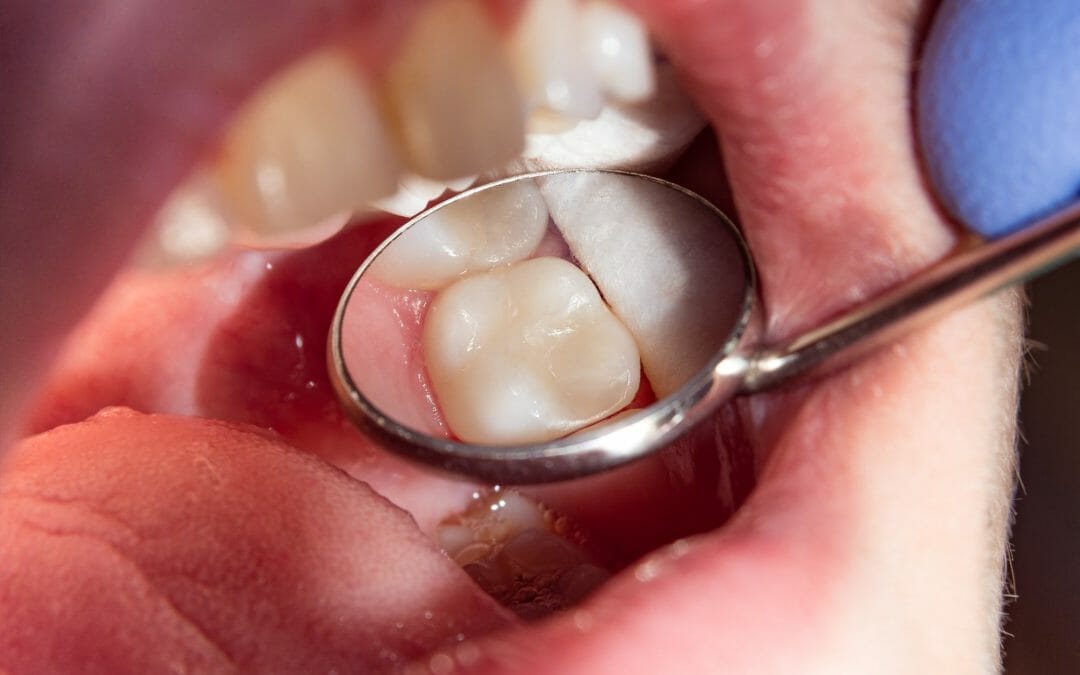Dental fillings have come a long way from the traditional metal amalgam fillings that we all have grown used to. Today, there are different types of fillings available, each with its own set of benefits and drawbacks. One such alternative to metal amalgam fillings are composite fillings. Composite fillings have proven themselves to be a more long-lasting and aesthetically pleasing choice. However, both composite and amalgam fillings have their pros and cons when it comes to restorative dental treatments. In this blog, we will dive into the topic of composite vs. amalgam fillings in detail. Read on to understand what sets the two types of fillings apart, how to choose the right filling type for you, what you can expect during the filling procedure, and how to take care of your teeth post the treatment.
What Are Composite and Amalgam Fillings?
When you need a filling, it is important to know the pros and cons of each type. Composite fillings use resin to provide a natural appearance and are appropriate for front and back teeth. These fillings are less durable than amalgam fillings and may require replacement in the long run. Amalgam fillings are strong, long-lasting, and affordable but can discolor over time, which affects appearance. They can also damage healthy tooth structure. Direct restorations, which include both types, are safe and effective for single-visit filling. While bioaccumulation and mercury toxicity concerns about amalgam fillings have been raised, they have been effectively and safely used by dentists for many years. Discuss with your dentist for a comprehensive conversation about the benefits and risks of removal if you have concerns about your amalgam filling.
Advantages of Amalgam Fillings
If you’re looking for a filling that lasts a long time, amalgam fillings are a good option. They are highly durable and can last for 10 to 15 years or even longer, depending on how well you care for your teeth. Additionally, they are less expensive than composite and gold fillings. Amalgam fillings are known to withstand the forces of strong chewing, making them a good fit for back teeth. While some people may be wary of the mercury content of amalgam filling, modern versions of the filling pose minimal mercury exposure risks. However, if you’re looking for a filling that’s aesthetically pleasing, cast gold fillings are an option. They require additional office visits and can be expensive, but they’re resistant to wear and highly durable.
Disadvantages of Amalgam Fillings
Amalgam fillings have certain disadvantages that make them a less ideal choice for some individuals. Firstly, they may discolor surrounding teeth and require the removal of healthy tooth structure. Secondly, they may expand and contract with temperature changes caused by consuming hot or cold drinks, potentially leading to cracks and fractures. Despite the concerns about the safety of amalgam-type fillings, there is no concrete scientific evidence linking them to diseases like autism, Alzheimer’s, or multiple sclerosis. Modern amalgam fillings contain less mercury and can be coupled with other metals, making them safer. With that said, other filling materials such as porcelain, gold, or composite substances have proven safe and long-lasting with sterile application and minimal discomfort. In summary, there are a range of filling options available, and the best choice depends on factors such as dental history, budget, and personal preferences.
Advantages of Composite Fillings
Composite fillings are ideal for small to medium-sized cavities as they are durable and fracture-resistant. Unlike silver amalgam fillings, composite fillings can be customized to match the color of the patient’s existing teeth. The natural appearance of composite fillings blends seamlessly with the surrounding teeth, making them hard to detect. Though porcelain fillings are also tooth-colored, they can be brittle and may be expensive as compared to composite fillings.
Composite fillings can last 5-10 years before requiring a replacement. Another significant advantage of composite fillings is that they are not affected by temperature changes, which can otherwise cause silver amalgam fillings to expand or contract, resulting in cracks and tooth decay. So, if you want a long-lasting, natural-looking solution to your dental problems, composite fillings may be the right choice for you.
Disadvantages of Composite Fillings
Composite fillings have come a long way in terms of durability and longevity, but they still don’t last as long as other alternatives such as gold or ceramic fillings. Composite fillings are usually less expensive, but may not be as cost-effective in terms of longevity. Composite resin fillings can be custom-colored to resemble the natural teeth, but require more skill to place successfully. Composite fillings require less drilling in the tooth structure and are ideal for smaller restorations.
Composite fillings can also be prone to discoloration over time, causing the need for replacement of the filling. In contrast, ceramic fillings have excellent durability and strength, but require a higher level of skill and expensive equipment to construct. Ceramic fillings also tend to be much more brittle than their composite counterparts, hence have a greater chance of chipping or breaking. However, larger and more complex ceramic dental restorations tend to last longer and may be more suitable for the back teeth.
How to Choose the Right Filling Type for You
When it comes to choosing the right filling type for your teeth, various factors influence the decision. Your dentist will consider factors such as the location of the decay, your medical history, and your aesthetic needs. The cost is another important consideration to take into account when making the decision. If you’re unsure which filling is right for you, consult with your dentist. Temporary fillings are used before placement of gold fillings or root canal treatments. While they are not meant to last long, failing to replace them can lead to tooth infections and complications. Ensure you learn how to identify signs of serious underlying conditions causing toothaches and how to care for them at home. Work with your dentist to weigh the pros and cons of each option and make an informed decision.
What to Expect During a Filling Procedure
Dental fillings are often required in cases of tooth decay or trauma. During the procedure, the dentist will numb the affected tooth and remove the damaged material before filling it with the chosen material. While the process may cause slight sensitivity to sweet foods or temperature changes, fillings can be a great solution for relieving toothaches.
Your dentist will discuss the options regarding the type of filling material, including composite and amalgam fillings. Composite fillings match the color of the natural tooth, while amalgam fillings are more durable and long-lasting. Your dentist will explain the details of each option so that you can make an informed decision.
If you experience any persistent sensitivity after the procedure or any other issues, contact your dentist immediately. They will be able to advise you on next steps to take.
Tips for Taking Care of Your Filled Teeth
Taking care of your filled teeth is essential to maintaining good oral health. One way to prevent decay and the need for fillings is by maintaining a healthy diet and regularly brushing your teeth. After filling placement, you may experience tooth sensitivity, which usually resolves in a few weeks. Pain around fillings may indicate an improper bite, and you should contact your dentist for a reshaping.
It is recommended to get regular dental check-ups to prevent tooth decay. Your oral health professional can discuss treatment options with you to help determine the best filling type for your specific needs. By taking proper care of your filled teeth, you can ensure their longevity and healthy function for years to come.
Final Words
Choosing the right filling material comes down to your specific dental needs and preferences. Amalgam fillings are known for their durability, while composite fillings offer a more natural look. It is advisable to consult your dentist to determine the right type of filling material for your teeth. Also, follow proper dental hygiene practices and schedule regular dental checkups to take care of your filled teeth. To learn more about dental fillings and other dental procedures, visit our website or schedule an appointment with Dentistry of West Bend today.


Recent Comments